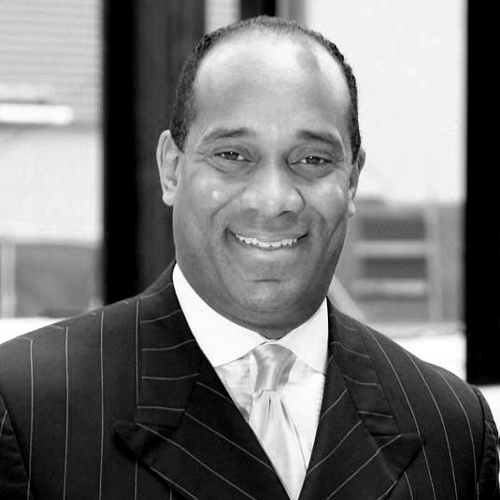It has been 14 months, yet workers leaving Monmouth Medical Center still find themselves exiting the parking lot and driving toward homes that no longer exist. For some of them, the hospital is one of the few places in the coastal town of Long Branch, New Jersey, where life can appear unchanged little more than a year after Hurricane Sandy left a wake of incomparable damage.
Of the eight facilities in the Barnabas Health system, Monmouth and Community Medical Centers witnessed the greatest destruction. Both operated solely on generator power for three days after the storm. While staff at Community Medical Center attended to the more-than-60 percent jump in patients brought in by the storm and business as usual—numerous babies were born at Monmouth in the three days following Sandy—a small but dedicated team attended to the staff. Rick Kiernan, vice president of human resources for Monmouth Medical Center, Barnabas’s Long Branch campus, manned the only working utility in the immediate aftermath, the telephones, trying to contact staff and verify their safety. Mary Deno, Kiernan’s equivalent in Barnabas’s Community Medical Center in Toms River, New Jersey, didn’t leave the hospital for 36 hours.

HR INSIGHT: “Understand the business and drive practices that engage staff with the business’s direction.”
“We’ve been through hurricanes, snowfalls of a couple feet—we know how to deal with that,” says Sid Seligman, senior vice president of human resources for the Barnabas system. “There was no plan stored away for how to deal with a super storm.”
Under normal circumstances, staff in one of Barnabas’s facilities would work through a storm and be released once it passed. With roads impassable from floodwaters and blocked by debris, Seligman and his COO could only gauge the extent of Sandy’s initial destruction through what was shown on TV. Unsure of the scale, but positive their people would be in need, they settled on an approach that was by all standards unprecedented: Any employee whose home was uninhabitable received $5,000 in cash. Moreover, those who lost their car would be given $1,000.
Less than five miles from Monmouth Beach, where pleasure boats flung from the water to land in the backyards of stately beach houses like the castaway toys of giants, Barnabas’s Monmouth Medical Center hospital was a refuge from flood waters that damaged the homes of one out of every 18 members of Kiernan’s staff. Cars, among other objects such as an entire roller coaster, floated in the Atlantic. And when the wind and rain finally subsided outside Deno’s hospital, which was set in the storm’s effective ground zero, some of the 125 employees who lost entire houses couldn’t even return home to validate it, but had to have neighbors show them pictures.
“These were people who FEMA and insurance were not going to help for months,” Seligman says. And while Barnabas distributed more than $5 million in cash, Deno recalls many employees who denied the aid out of selfless concern for others. “So many people came in and said, ‘Keep the $5,000. Give it to another employee,’ after they had just told me they had six feet of water and ducks in their kitchen,” she says. “So many people felt like, ‘At least my house is standing; it’ll be okay six months from now.’”
The sentiment was reflected across the hospital staff—Deno tells of an emergency department technician who swam to work just to contribute to the relief effort—which Seligman says stood as an example for the HR team. Those physicians, nurses, cafeteria workers, and support staff from whom they expected excellent service and compassion, the team decided, could only deliver if they received the full support of the HR team.
That support was as basic as providing firewood to help families through cold November nights without power and as complex as arranging for gasoline vouchers amid shortages and rationing. However, for professionals versed in compensation and benefits, the needs of their employees at first were jarring.

“When staff comes to you and tells you they’re hungry, you say ‘What do you mean?’” Kiernan says. “And when they say, ‘I don’t have any money,’ it makes you feel like you’re not in Long Branch, New Jersey.”
“We stopped doing HR for three weeks for sure, only disaster relief,” says Deno, echoing her colleague. But after a moment, she reconsiders: “Well, I define HR as providing resources to humans, so we were doing HR.”
Flashlights were distributed so staff and residents could navigate the many windowless corridors of the centers. For two weeks, the Monmouth center became a multipurpose second home, offering washers and dryers for laundry and free meals to employees and their families. Charging stations kept people connected through their mobile devices, and miniature Internet cafés allowed them to pay bills and conduct their online business as usual.
Funding was also granted for Deno and Kiernan to respond to the specific needs of their facilities. In Toms River, more than 200 cots provided homeless employees a place to rest. In Long Branch, where schools shut down for two weeks after the storm, a pop-up day care relieved staff that wanted to work but couldn’t leave their children alone.
One of the most valuable but unquantifiable resources Barnabas offered came in the form of emotional support. Whether formally through professional counselors or informally by way of an embrace shared between an HR team member and an affected employee, Seligman says attending to the staff’s emotional health was a critical measure through which the HR teams demonstrated exquisite service in the most sensitive of situations, and in which employees could find an example and inspiration to care for their own patients. “We realized what we did could never compensate people for their loss,” Seligman says. “So we just tried to continue to support them as best we could.”
More than a year after Sandy made landfall on the East Coast, new planks are lain where the skeletons of boardwalks and piers still stand, like Barnabas’s staff, in tenacious defiance of the hurricane’s destruction. But physical recovery is slow and has not materialized for everyone.
“I don’t like to look back at October,” says Kiernan, as he pages through his calendar. After his crew went into disaster-relief mode, it wasn’t until Thanksgiving that his agenda registered “normal” HR activities again. The vice president did revisit October 29, 2012, at a debriefing session held last June. His HR team is no longer orchestrating clothing drives or dispensing survival commodities, but eight months after the storm, they were still providing emotional support. “We had our employee assistance come in to discuss how the staff was feeling that day because so many are not back in their homes yet.” Kiernan says. “I think we thought it would be a much quicker recovery.”
The bustle of the hospitals can offer an eight-hour reprieve from the weight of Sandy’s impact on the minds of Barnabas’s
affected staff, but some choose to remember out of gratitude and thanks. The pastries that continue to turn up in Kiernan’s office and the handwritten notes sent to Deno are small but meaningful gestures. Barnabas never asked its employees to pay back any of the cash it distributed, but for some, the currency of homemade cookies is all they can offer and more than the HR teams ever expected.
“People would come in and hug us and cry and tell us that we saved their lives,” Deno says. “At the end of the day, that’s what we’re in business for: taking care of our own community—not just people coming into the ER, but our own employees’ welfare.”

